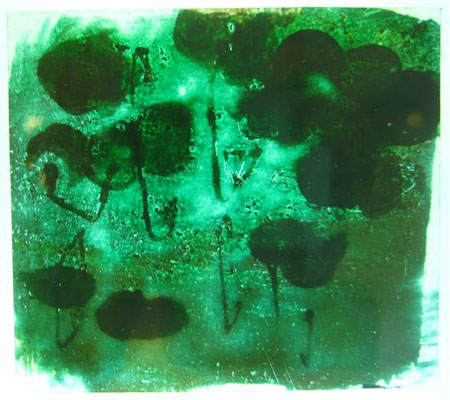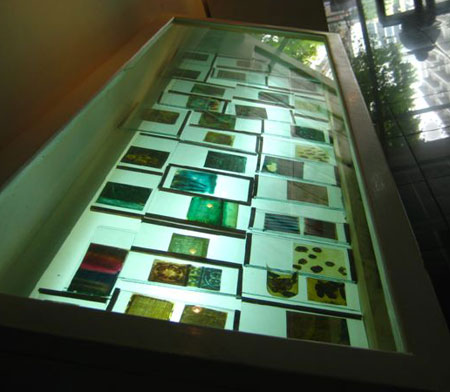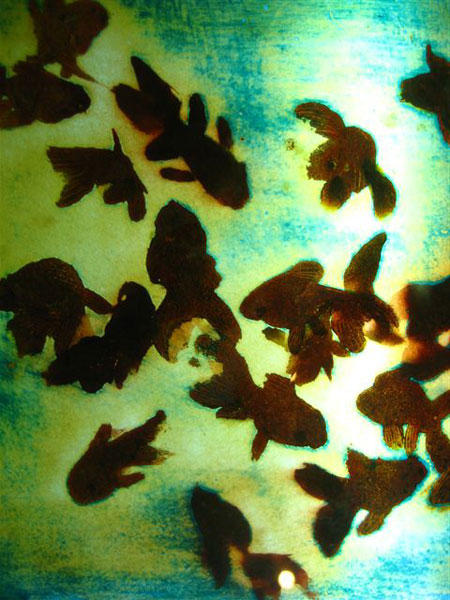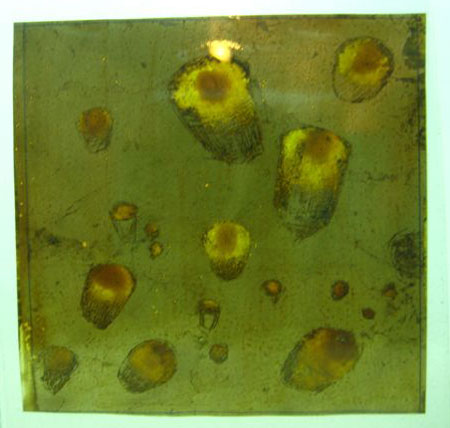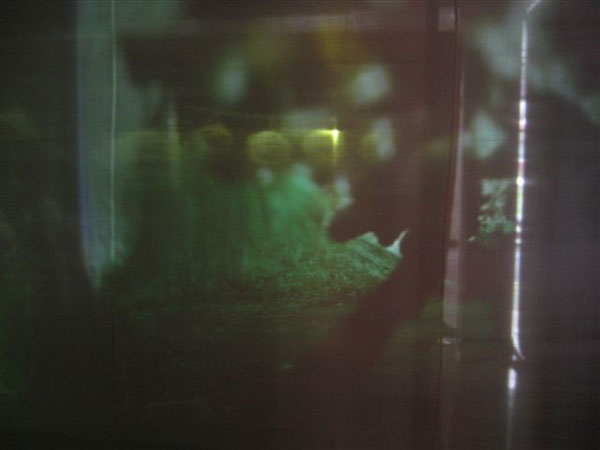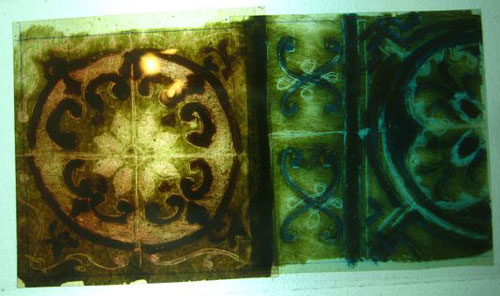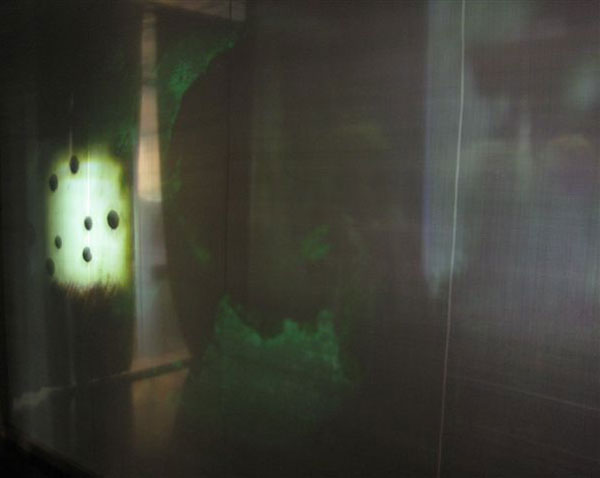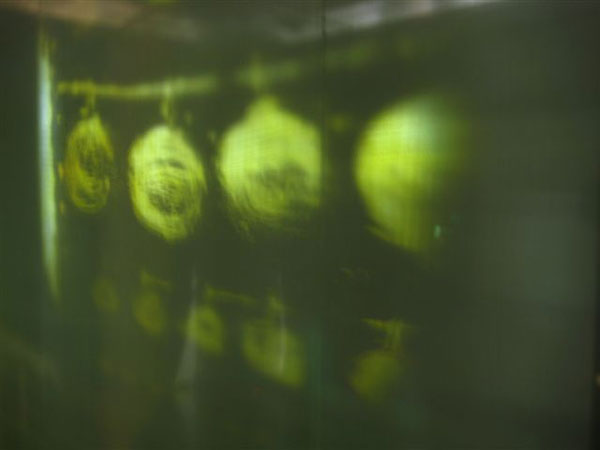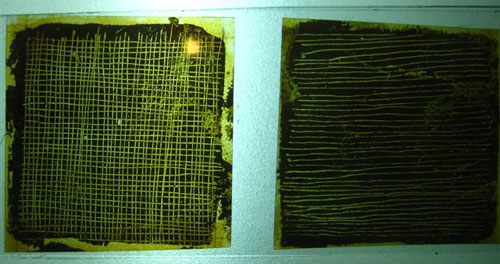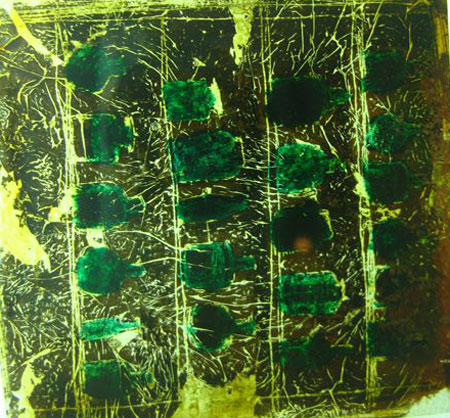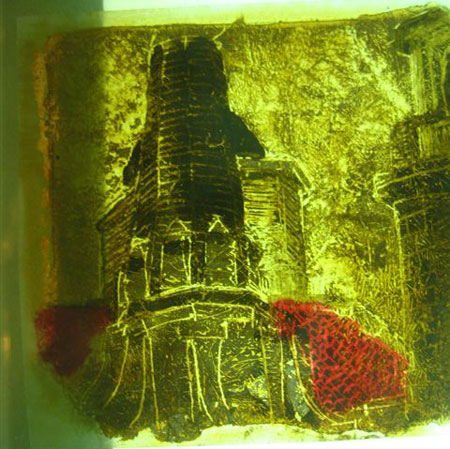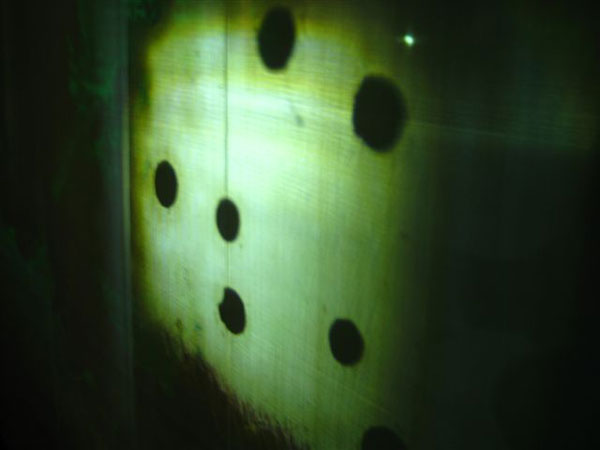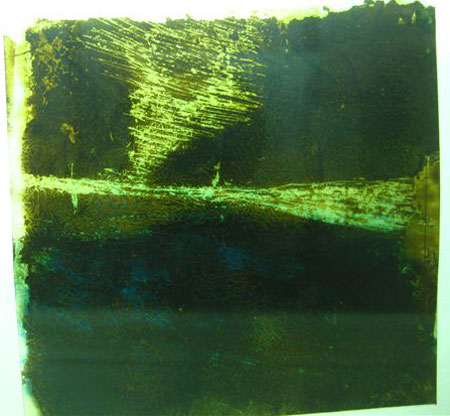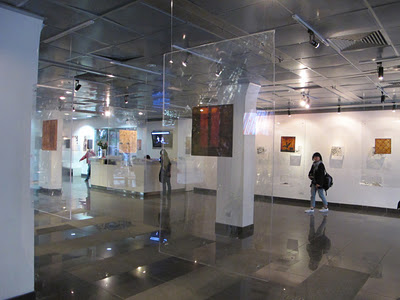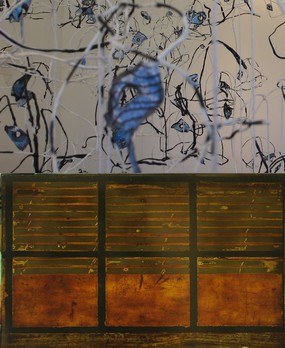10 January 2010
A Lacquer Renaissance: One artist brushes the cobwebs off lacquer painting and takes a new look at an old medium.
Written by Bailey Seybolt. Photos by Aaron Joel Santos.
Source: The Word Hanoi, Monthly lifestyle print magazine, January 2010
The artist at work
Some artistic inspiration requires a visit from a muse. Other good ideas have more earthly beginnings. “I was having my coffee in a dark, very narrow, typically nameless café in Hanoi,” says artist Phi Phi Oanh. “I was aimlessly staring at the stains of humidity, dirt, and time on the other wall when it came to my mind to create a narrow space, a tunnel, reflecting the architecture of Hanoi and enigma of its charm.”
Phi Phi is no stranger to the interplay between art and daily life. Arriving in Hanoi on a Fulbright grant to study son ta (natural lacquer painting) in 2005, she became interested in pushing the boundaries of an art form considered by most to be reserved for traditional work. “There is a lot of fuss made about ‘traditional’ lacquer painting in Vietnam,” she says, “but I don’t see many artists up-keeping that tradition. I also don’t see it as being particularly old or time worn.” Instead, her work is part of an evolution in lacquer painting that will move it out of the realm of ancient vases and lacquer dragons and into more worldly subjects – the texture of a rough brick wall, the sheen of a hinge on a wooden door, and even the flash of a swimming goldfish.
“My focus is not how to continue or re-interpret a tradition,” she says. “Rather, I am interested in how the use and practice of son ta can have meaning and respond to contemporary concerns.”
Putting it together: Add and Subtract
Though Phi Phi mainly paints on the flat surfaces of wood and metal, her work seems almost sculptural in its many layers and textures. “Most of the innovations in lacquer painting have been stylistic innovations,” she says. “Cubism, Expressionism, and Social Realism in lacquer - these have all been through the prism of oil painting. I think lacquer can be looked at as an entirely different genre. Lacquer can be more than just a window on the world – like a painting. Its qualities suggest it fills a gap between photography, painting and sculpture,” she adds.
One of the things that sets lacquer painting apart is the process of creation. In oil painting you add paint to create a picture. In sculpture you chip away at stone to create an image. Lacquer painting is a combination of both. “Lacquer is a play of thickness,” says Phi Phi. “The image you want to keep has to be thicker.” Creating a painting can often take months, as layer upon layer of lacquer is added and then polished by both the artist and her assistants wearing rubber boots and wielding sandpaper to create a brilliant shine. “Sometimes, in big projects, you will rediscover images you forgot were even there,” says the artist. And big is exactly how to describe her most recent endeavour.
The tools: Specula
The moment of inspiration in the dusty old coffee shop has turned into Phi Phi’s most ambitious project yet: a seven-metre-long, four-metre-tall installation titled Specula. Specula is not just a large painting, but a self-contained cave-like structure. The walls and dome of the cave are made from lacquer on epoxy fiberglass composite, and the images inscribed on the wall are lit from beneath by a semi-transparent glass floor. “I use the transparency and layering ability of lacquer to create a network of images, to create an imaginary cave comprising two halves - cave interior and cave underwater joined by an arabesque arch,” she explains. The cave interior focuses on the simple lines and drawings of prehistoric man, encouraging the viewer to seek out their own meaning. “I tried to keep it simple, reduced, to allow the viewer to continue the line of the imagination, like the wonderment in looking for shapes in cloud formations or staring at the wall of the Ryo-angi gardens in Kyoto,” says Phi Phi.
The cave underwater aspect of the piece uses the natural shine of the black lacquer to play on the idea of water as a reflective surface. There is something eerie about seeing yourself reflected in what appears to be a black bottomless pool that is, in reality, completely self-contained. “In areas, I try to simulate the effect of looking through muddy water and finding that you can see only yourself in the reflection,” she says.
If there seems to be a natural theme running through her work, it’s no coincidence. One of the most important elements of lacquer painting is its connection to the natural world. Not only is the lacquer itself a natural substance produced from a tree indigenous to northern Vietnam, but the process itself can’t occur without the elements. “Lacquer depends on humidity,” adds Phi Phi. “It is the perfect marriage between environment and art because its dependency on climate to dry is a wonderful parallel to our relationship with nature and our environment.” It is an ambitious project to bring all these elements together, but the artist is fully aware of the challenges that lie ahead.
“I hope this project showcases the way traditions can crossover to different areas, and how we can see the old in a new light,” she says.
Specula opens on Dec. 4 and runs to Dec. 31 at the Hanoi City Exhibition Hall, 93 Dinh Tien Hoang,
Hanoi
.





